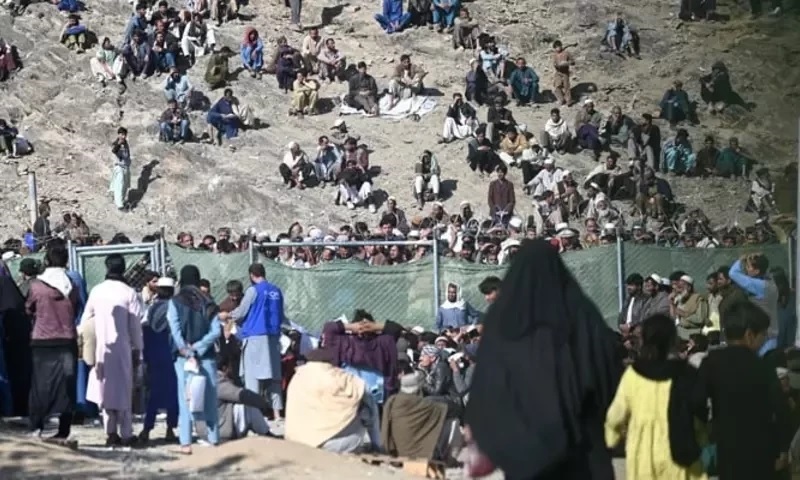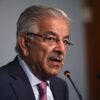ISLAMABAD: The government of Pakistan has drafted a comprehensive three -phase plan to bring Afghan refugees back home, which connects foreign missions to transfer Afghan citizens outside Islamabad and Rawalpindi till March 31, 2025. Advisory has been instructed.
The failure to do so will result in forced return to Afghanistan.
The move comes between US President Donald Trump’s US refugee interior program (USRAP) suspension, which effectively prevents Afghan citizens’ promised rehabilitation, including US forces, NATO and Ben There are also people working with international NGOs.
When the Taliban took over Afghanistan in August 2021, thousands of Afghan neighboring countries fled to Pakistan, hoping that they would receive US visas as part of the resettlement scheme. Now, they face uncertainty and potential exile.
A document prepared by the Prime Minister’s Office, which has been viewed by CNN, outlines a step -by -step strategy, which includes Afghan citizens in the twin cities of Islamabad and Rawalpindi. Foreign missions are needed to accelerate the resettlement process. If Afghan citizens have not been transferred to March 31, 2025, according to official sources, they will be “returned to Afghanistan”.
The project also includes monitoring and implementation measures by Pakistani intelligence agencies in collaboration with the Prime Minister’s Office. The Interior Ministry emphasized that under the “illegal foreign repatriation plan (IFRP)”, all non -documentary foreigners, including Afghan nationals, will be deported.
In addition, Afghans holding Afghan Citizens Cards (ACC) issued almost a decade ago may face deportation if their settlement is not completed.
Shakova Khalili, who worked in the US Embassy in Afghanistan, worked in a abuse of children who was funded by the US Embassy, shared his trial with media outlets, saying that she is now her husband and her husband. How to hide with a child in Islamabad. If Khalili was deported to Afghanistan, he expressed his arrest, violence or death, where the Taliban understand the enemies of former US allies.
Many Afghan refugees, especially women, journalists, workers, and ethnic minorities, face persecution under the Taliban rule. The United Nations Refugee Agency (UNHCR) and the International Organization for Migration (IOM) both have warned against the serious consequences of forced deportation, and termed it a violation of international refugees’ protection standards Is
The founder of #Afghanevac, Sean Wandore, who is a coalition of re -resettlement and experienced groups, has said that between 10,000 and 15,000 Afghan visas or third countries are awaiting settlement in Pakistan.
In a social media post, Vandor highlighted how Trump’s policy influences Afghan women trapped in Pakistan. “Since the collapse of Kabul, Afghan women have been systematically eliminated from public life. It is banned from education, work and basic freedoms. For many people, USRAP was the only viable path to safety. Also, the door is closed, “he wrote.
In recent years, Pakistan has intensified crackdowns against Afghan refugees, especially since 2023, since 2023, as a means of pressuring the Taliban to reduce the activity of militants from cross -border militants. Is According to the UNHCR, about 800 800,000 Afghan citizens have left Pakistan during this period.
Punjab and Sindh provinces have witnessed ongoing operations targeting Afghan refugees without any legal legal status. Vehicles carrying non -documentary Afghans have been stopped, and thousands of people have been taken into custody or forced to return to Afghanistan.
The government says its actions are aimed at resolving security concerns and preventing economic tensions with non -documentary residents.
Despite emphasizing the efforts of the Interior Ministry of Pakistan’s Interior Ministry to resettle, neither the US Embassy in Islamabad nor Pakistan’s Foreign Affairs Ministry provided details about the current harmony efforts.
However, humanitarian groups are calling for immediate intervention to prevent large -scale exile.
Pakistan hosts the world’s largest Afghan refugee population, with more than three million Afghans living in the country, including more than 800,000 non -documents.
The waves of Afghan migration took place in the 1980s, the Soviet invasion of Afghanistan, followed by further migration after 9/11 after the US -led intervention.
In 2021, the withdrawal of US troops from the chaos mobilized another arrival, in which about 600 600,000 refugees entered Pakistan.
For Afghan citizens like Khalili, the suspension of US visa processing and the threat of deportation is a catastrophic blow.
“The Taliban see us as enemies, and if we are forced, we face a serious reality of arrest, violence or death,” Khalili said.
He added, “This suspension denies us to the shelter and protection that we were promised, which we will suffer from unimaginable consequences at the Taliban’s mercy.”
Invisions situation indicates the uncertainty of Afghan refugees in Pakistan and the urgent need for international cooperation to tackle the humanitarian crisis.













